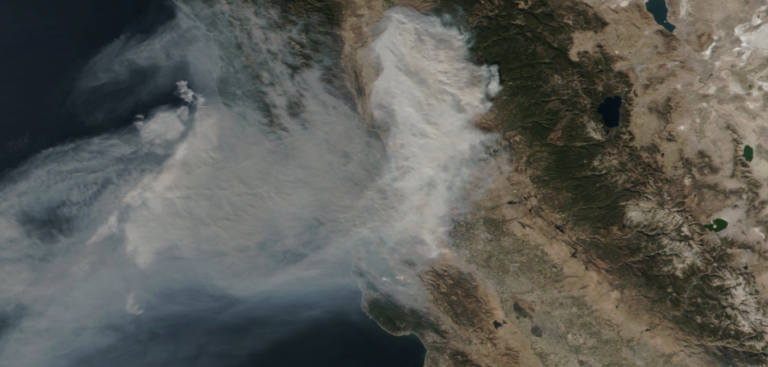According to a new paper, published in the journal Nature Geoscience, nitrous acid in wildfire smoke may have a much greater impact on air quality than previously thought.
Though not well represented in lab experiments, the study, led by the University of Colorado Boulder and the Belgian Institute for Space Aeronomy, found that in the real-world atmosphere, during wildfires, the chemical plays a leading role—spiking to levels significantly higher than scientists expected and driving increased ozone pollution and harming air quality.
“We found nitrous acid levels in wildfire plumes worldwide are two to four times higher than expected,” said Rainer Volkamer, CIRES Fellow, professor of chemistry at CU Boulder and co-lead author of the study. “The chemical can ultimately drive the formation of lung- and crop-damaging ozone pollution downwind of fires.”
Nitrous acid in wildfire smoke is accelerating the formation of an oxidant, the hydroxyl radical or OH. Unexpectedly, nitrous acid was responsible for around 60% of OH production in the smoke plumes worldwide, and the research team estimated it is by far the main precursor of OH in fresh fire plumes. The hydroxyl radical, then, can degrade greenhouse gases, and it can also accelerate the chemical production of ozone pollution by as much as 7 parts per billion (ppb) in some places – enough to push ozone levels over regulated levels (eg, 70ppb in the USA).
“Fire size and burn conditions in the real world show higher nitrous acid than can currently be explained based on laboratory data, and this added nitrous acid drives faster chemistry to form ozone, oxidants and modifies aerosols in wildfire smoke,” Volkamer added.
Nitrous acid, while abundant after wildfires, degrades quickly in sunlight, and is thus exceedingly difficult to study globally. To mitigate this, the CU Boulder team worked with European colleagues to combine two sets of data:
1) Global measurements from a satellite instrument TROPOMI observed nitrous acid in wildfire plumes around the world; and
2) Custom instruments flown on aircraft during a 2018 wildfire study in the Pacific Northwest during the BB-FLUX campaign. Remarkably, the team was able to compare near-simultaneous measurements made within minutes by the satellite looking down on a plume, and the aircraft-based instrument looking up into the same plume from below.
“Kudos to the pilots and the entire team for dealing actively with this fundamental sampling challenge,” Volkamer remarked. “Simultaneous measurements conducted at different temporal and spatial scales helped us to understand and use what are the first global measurements of nitrous acid by our Belgian colleagues.”
Armed with this information, the research team was able to scrutinize satellite data from a large number of wildfires in all major ecosystems across the planet to assess nitrous acid emissions.
The findings showed the levels of the chemical are consistently higher than expected everywhere, but levels differ depending on the landscape.
“Nitrous acid emissions relative to other gases involved in ozone formation varied by ecosystem, with the lowest in savannas and grasslands and highest in extratropical evergreen forests,” explained Kyle Zarzana, chemistry postdoctoral scientist at CU Boulder who led instrument deployment for the aircraft measurements, and co-author on the new paper.
“Wildfire smoke contains many trace gases and aerosols that adversely affect visibility and public health over large distances, as we are recently witnessing from fires raging in the Western USA that affect air quality on the East Coast,” concluded Volkamer. “Our findings reveal a chemically very active ingredient of this smoke, and help us to better keep track as photochemistry rapidly modifies emissions downwind.”



